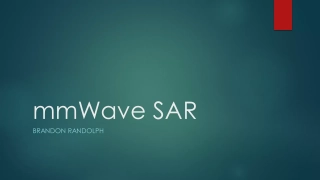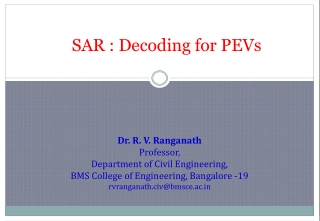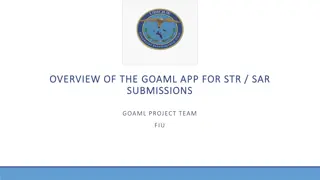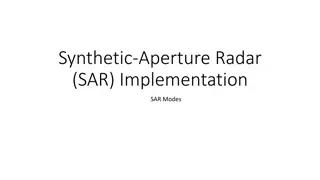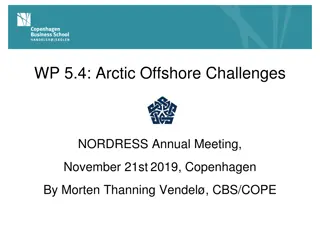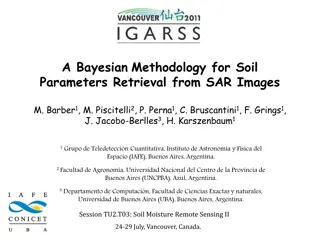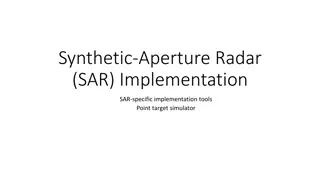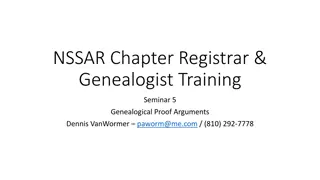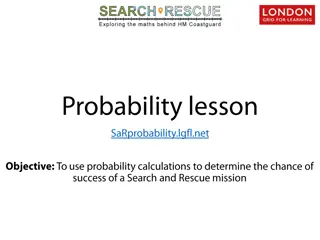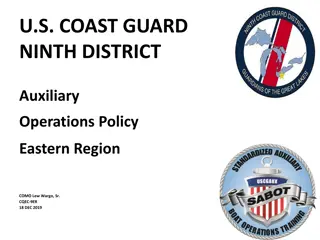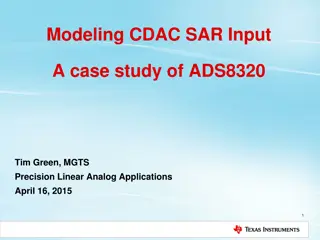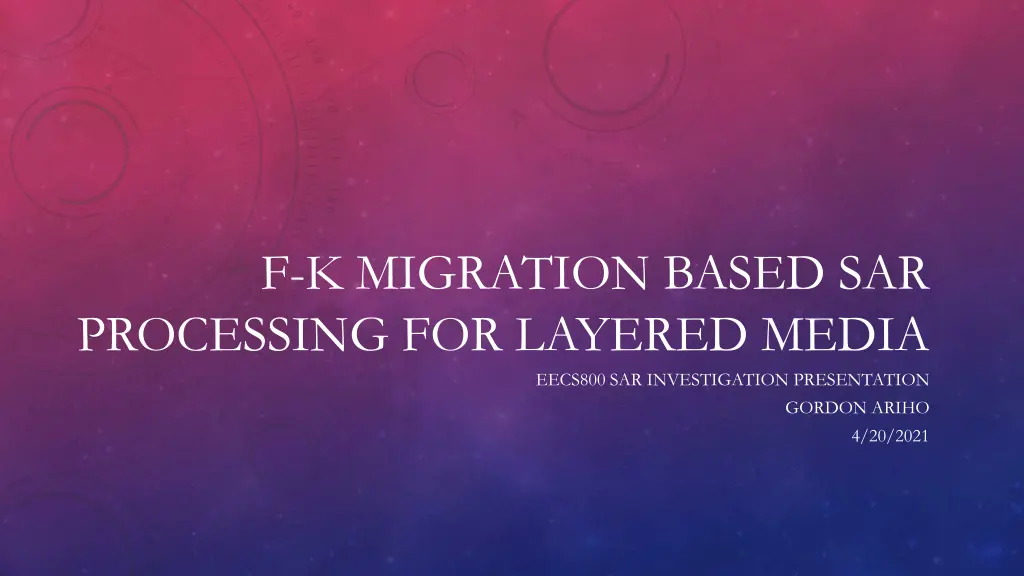
Layered Media SAR Processing Using F-K Migration Algorithm
Explore the application of the F-K migration algorithm in SAR processing for layered media, including a recap of the algorithm, uniform dielectric half-space model, and F-K migration for layered media. Learn about the process steps and considerations when dealing with multilayer scenarios. Credit: Martin H. Skjelvareid, Tomas Olofsson, Yngve Birkelund, Yngvar Larsen.
Download Presentation

Please find below an Image/Link to download the presentation.
The content on the website is provided AS IS for your information and personal use only. It may not be sold, licensed, or shared on other websites without obtaining consent from the author. If you encounter any issues during the download, it is possible that the publisher has removed the file from their server.
You are allowed to download the files provided on this website for personal or commercial use, subject to the condition that they are used lawfully. All files are the property of their respective owners.
The content on the website is provided AS IS for your information and personal use only. It may not be sold, licensed, or shared on other websites without obtaining consent from the author.
E N D
Presentation Transcript
F-K MIGRATION BASED SAR PROCESSING FOR LAYERED MEDIA EECS800 SAR INVESTIGATION PRESENTATION GORDON ARIHO 4/20/2021
CONTENTS Introduction Recap of F-K migration algorithm Uniform dielectric half-space model F-K migration for layered media Air/Ice Example (CReSIS) Conclusion / Remarks / Discussion
INTRODUCTION f-k migration or ?_? algorithm (WKA) is applied to wideband scenarios where the RDA and Chirp-scaling algorithm cant be applied reliably. WKA is based on the exploding source model and the scalar wave equation: = ? ??.?+??? The rectangular components of the vector wavenumber obey the separation equation 2+ ?? 2+ ?? 2= ?2= ?2/?? 2 ??
RECAP OF F-K MIGRATION ALGORITHM Step 1: 2D FFT Radar signal data SAR signal domain Transform SAR signal data to 2D frequency domain Step 2: Reference frequency multiply (RFM) 2D FFT Reference function is computed for a selected range, usually the mid swath range. Accuratte ?? algorithm Reference function multiply (bulk compression) Target at reference range is correctly focused, but targets away from that range are only partially focused. This will apply both range and azimuth compression 2D Frequency domain Step 3: Stolt Interpolation Stolt mapping along the range frequency axis (differential compression)) Focusses the remainder of the targets using an interpolation in the range frequency direction. Step 4: 2D IFFT To transform the data back to the time domain, i.e. the SAR image domain. 2D IFFT SAR image domain Compressed image data Credit: Ian G. Cumming, Frank H. Wong, 2004
UNIFORM DIELECTRIC HALF-SPACE MODEL (LAYERED MEDIA) Antenna Observation point ??,??,?? ?1 ?? ???? ?1 ? ?? ?1 ?? ???? ? Actual path is derived using Snell s law and ray optics. Apparent target ?2 ? The deviation in ray path from a straight line is more significant away from nadir. ?2 ? Snell s law: ??sin?1= ??sin?2 Point target ??,??,?? Actual target Credit: Lixin Cai, 2000
F-K MIGRATION FOR LAYERED MEDIA (1) The image ?(?,?) of the exploding sources for a wave field ?(?,?,?) is computed when the imaging condition is to set ? = 0 , i.e. ?(?,?) = ?(? = 0,? ?,). The field in time-space coordinates under this condition becomes: + ? ?,??,? ???? ??????d??d? where ? ?,??,? is the wave field. ? ?,? + ? = The above is iteratively applied to create an image line by line, by applying it for all depths Z + z to be imaged. <= PSM Consider ? = 1,2, ,? layers and let ?? and ?? denote the thickness and wave velocity of layer ?, respectively. x ?2 ?? 2 ???= sgn ? . 2 ?? ?1 ?1 ?1 ?2 Extrapolation through several layers directly is not possible in multilayer case but ?2 ?2 extrapolation within each layer is still possible. ?3 ? ?,??,??+ ? = ? ?,??,??????? ? , ? < ?? ?? 1 where ?(?,??,?? ) denotes the field at interface ??, and ?(?,??,??+ z) ?? 1 ?? 1 ?? z denotes the field at depth z =??+ z ?? Credit: Martin H. Skjelvareid, Tomas Olofsson, Yngve Birkelund, Yngvar Larsen, 2011
F-K MIGRATION FOR LAYERED MEDIA (2) Algorithm: 1. The wave field at the top of the layer interface, ?(?,??,??) is computed. 2. At each depth ?? + ? to be imaged within the layer: The wave field is shifted downwards with ?by multiplying with a phase factor to obtain ?(?,??,??+ ?). ? ?,??,??+ ? = ? ?,??,??????? ? An image line ?(?,??+ ?) is created by integrating with regard to and inverse transforming with regard to ??. + ? ?,??,? ???? ??????d??d? ? ?,? + ? = The Stolt interpolation may be adapted to the multilayer case to enable imaging of an entire layer through a single inverse Fourier transform rather than creating an image of each layer line by line.
EXAMPLE SYSTEM - CRESIS CReSIS Radar Echo Sounder system: Fc = 150 MHz. Pulse duration = 1.6 s. Peak power = 200 W peak power. Bandwidth = 17 MHz. Considered a dielectric half-space comprising of free space (air) and ice 21/2 ????= ? ?????0 2 2 ?? 2 1/2 ?0= ? ?0?0???: ??1= ???? ???: ??0= ?0 ?? Two filters: ??????,? = exp ???02 ? ??,? ?=0= ??????,? ? ??,? The migrated image at z=0 is determined by converting the field back into the space-time domain and evaluating at time zero. 1? ??,? ? ?,? = 0 = ??? t=0 ? ??,? = exp ???12? ? ??,? ?=?= ? ??,? ? ??,? ?=0 where d is the vertical resolution of the image. The fields at subsequent depths are calculated by iteratively applying the filter, while the migrated image at these depths is calculated in each iteration. [? ?,? = 0 = ??? 1? ??,? t=0] ? ??,? ?=??= ? ??,? ? ??,? ?= ? 1 ?
The figure shows ice thickness data resulting from radar data (collected on June 27, 1998) processed with the f-k migration technique in the Jacobshavn Glacier channel. Ice thickness plot over the Jakobshavn region Credit: C. Leuschen , S. Gogineni, D. Tammana, SAR Processing of Radar Echo Sounder Data, IGARSS 2000
CONCLUSION / REMARKS / DISCUSSION We note that in the normal F-K migration, we focus to the center of the scene (or a particular reference) and then do Stolt interpolation to fix the rest of the scene. However, the adaptation to dielectric half-space focuses each row one at time. So we can avoid the IFFT step by using summation. For multilayer set up this can considerably speed up the processing. Additional phase delay is added to the previous result without the need to re-compute for the previous rows because each subsequent row sees what the previous rows see with just a little more
REFERENCES C. Leuschen , S. Gogineni, D. Tammana, SAR Processing of Radar Echo Sounder Data, IGARSS 2000 Lixin Cai, Ultra-Wide-Band Model-Based Synthetic Aperture Radar Imaging through Complex Media, Ohio State University, 2000 Martin H. Skjelvareid, Tomas Olofsson, Yngve Birkelund, Yngvar Larsen, Synthetic Aperture Focusing of Ultrasonic Data From Multilayered Media Using an Omega-K Algorithm, IEEE Transactions on Ultrasonics, Ferroelectrics, and Frequency Control, vol. 58, no. 5, May 2011 Ian G. Cumming, Frank H. Wong, Digital processing of synthetic aperture radar data: Algorithms and implementation, Artech House Remote Sensing Library)

